Entomology Terms
1/244
There's no tags or description
Looks like no tags are added yet.
Name | Mastery | Learn | Test | Matching | Spaced |
|---|
No study sessions yet.
245 Terms
Nomenclature
Subset of taxonomy concerning rules for application of scientific names to species and groups of species
Systematics
Study of species and the phylogenetic relationships among them
Homeotic genes
- Direct formation of body plans
- Mutations result in big changes
Ametabolous
- Undergoing slight or no metamorphosis
- Parainsecta + Apterygotes
Hemimetabolous
- Incomplete metamorphosis
- Exopterygotes (wingpads outside)
Holometabolous
- Complete metamorphosis
- Endopterygotes (wingpads inside)
- Reduce food competition
- Separate predators/parasites/pathogens
- Reduced immature life spans
- Longer reproductive phase
Class Entognatha
- Parainsecta
- Primitively wingless
- Most w/ antennae
- Most w/ eyes/ocelli
- Indirect fertilization, Spermatophores
- Ametabolous
Epimorphic
Abdominal segments not added
Anamorphic
Abdominal segments added
Cryptozoic
Insects living in litter & upper soil layers to survive conditions here
Ocelli
Simple eyes on an insect used to sense light
Cerci
Extentions of an insects abdomen used to give an insect a sense of touch at the back of the body.
Dicondylic Mandible
Mandibles with two joints. Usually found in winged insects and silverfish.
Infraclass Pterygota
- Wings do not fold
- Hemimetabolous
- Aquatic naiads
Subimago stage
A winged juvenile stage in Emphemeroptera
labium
lower lip
Autotomy
Shedding of a body part when attacked, Diplura
Tympana
The ears of crickets, katydids and grasshoppers that are not on their heads, but are on their legs or abdomen
Stridulation
Sound produced by dragging a row of peg-like structures across a file-like structure.
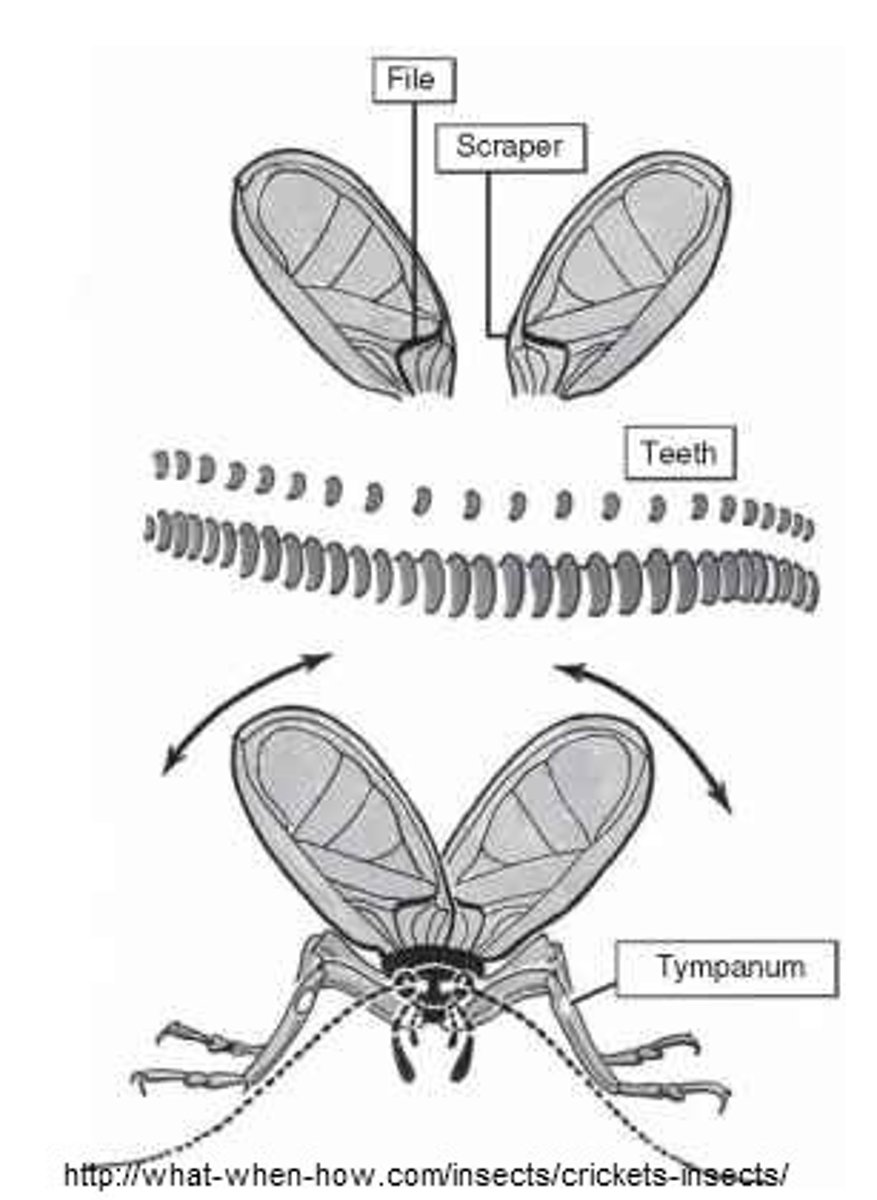
coxae
hip bones
Ootheca
A protective structure many female insects construct around their eggs. A product of the female's accessory glands. A mantid's has the texture of Styrofoam; a roach's looks like a tiny purse.
Hemelytra
The half leathery, half membranous wings of true bugs like stink bugs.
GWSS
Glassy Winged Sharpshooter Infestation
Unique Hemiptera Digestive System
- Filter chamber
- Phloem/xylem feeding
-Shunt excess water & sugars
- Edosymbiotic bacteria
Parthenogenesis
Asexual reproduction in which females produce offspring from unfertilized eggs. (Mitosis)
coccoids
7 chromosomal systems, most genetically complex animals on the planet
cuticular respiration
Gas exchange directly through cuticle
Thoracic gills
Plecoptera thorax gills
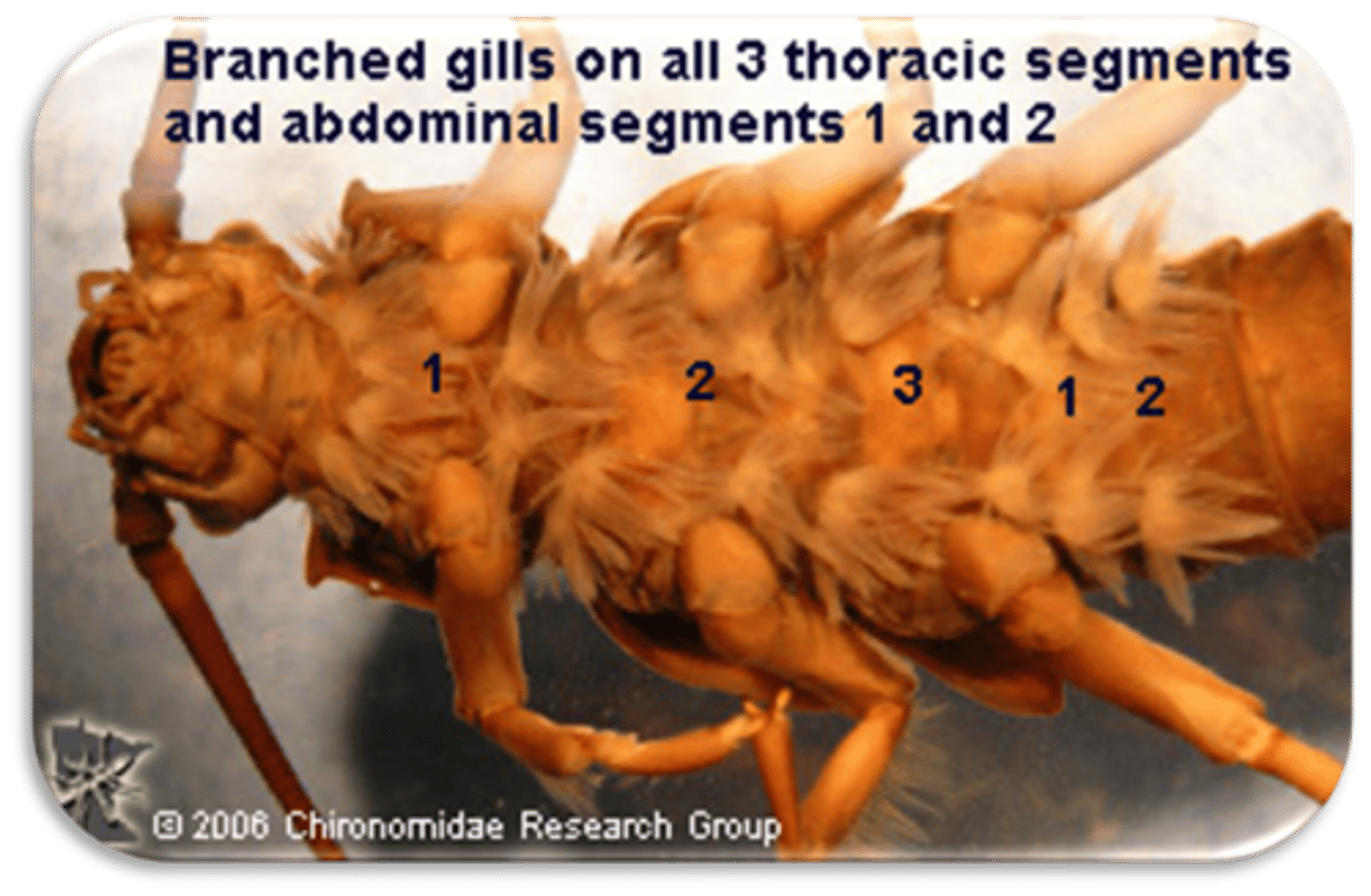
Retinaculum
- Collembola
- Holds the Furcula in place
Furcula
tail-like appendage on springtails that lets them jump

Cornicles
Tail pipes that secrete defensive chemicals (aphids)
Cauda
aphid tail
Parthenogenic
Asexual form of reproduction found in females (aphids)
Polyphagous
able to feed on various kinds of food
Tymbals
The vibrating panels on the side of male cicadas, used to call females
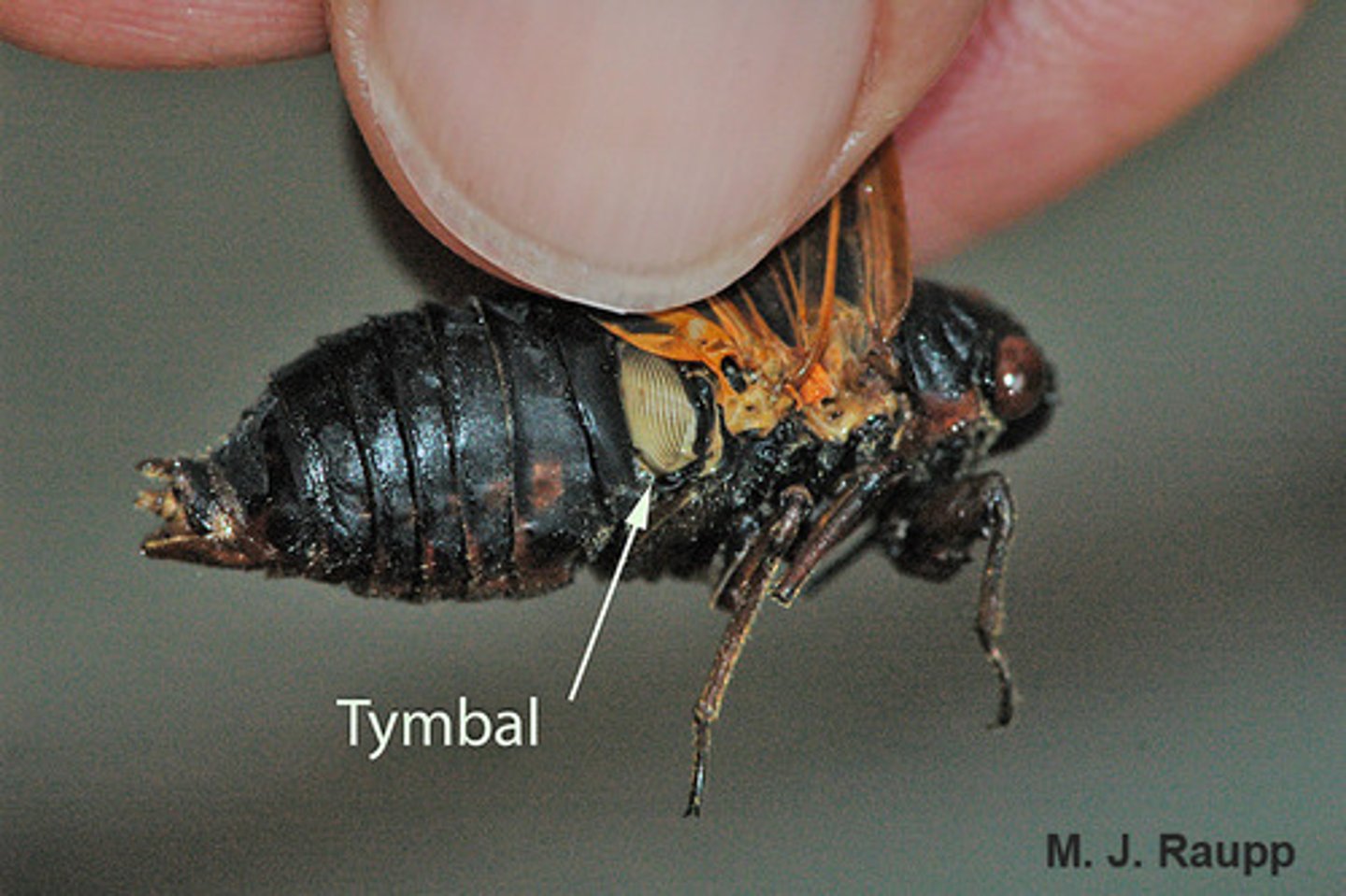
Tarsi
Final segment of an insect's leg, and is the part that makes contact with the ground
Clypeus
a broad plate at the front of an insect's head.
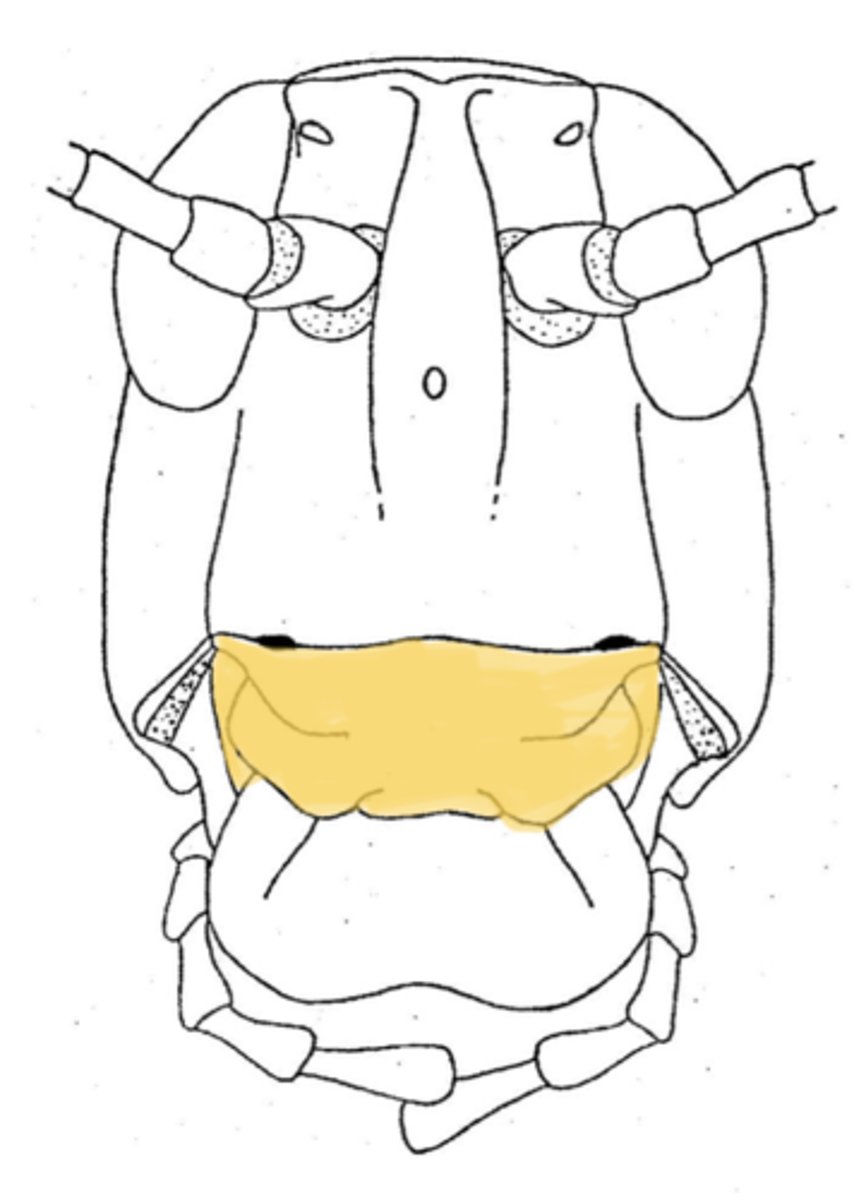
Fontanelle
termite soldiers have a tube-like projection that contains a sticky substance that entraps their enemies
Cursorial
Used for walking and running. The bog-standard insect leg
Saltatorial
Adapted for jumping with elongated tibia and fibula
Natatorial
Adapted for swimming. Usually with elongated setae on tarsi.
Pronotum
The top plate on the prothoracic segment. Often highly modified for defense, mating contests, or camouflage purposes.

Apterous
- Secondary reproductive termite that lack wings and are derived from workers
- No wings
Arrhenotoky (haplodiploidy)
Production of males pathogenetically (unfertilized eggs) and females from fertilized eggs: Hymenoptera
Stemma
- Second group of simple eyes
Elm zigzag sawfly
Aprocerus leucopoda
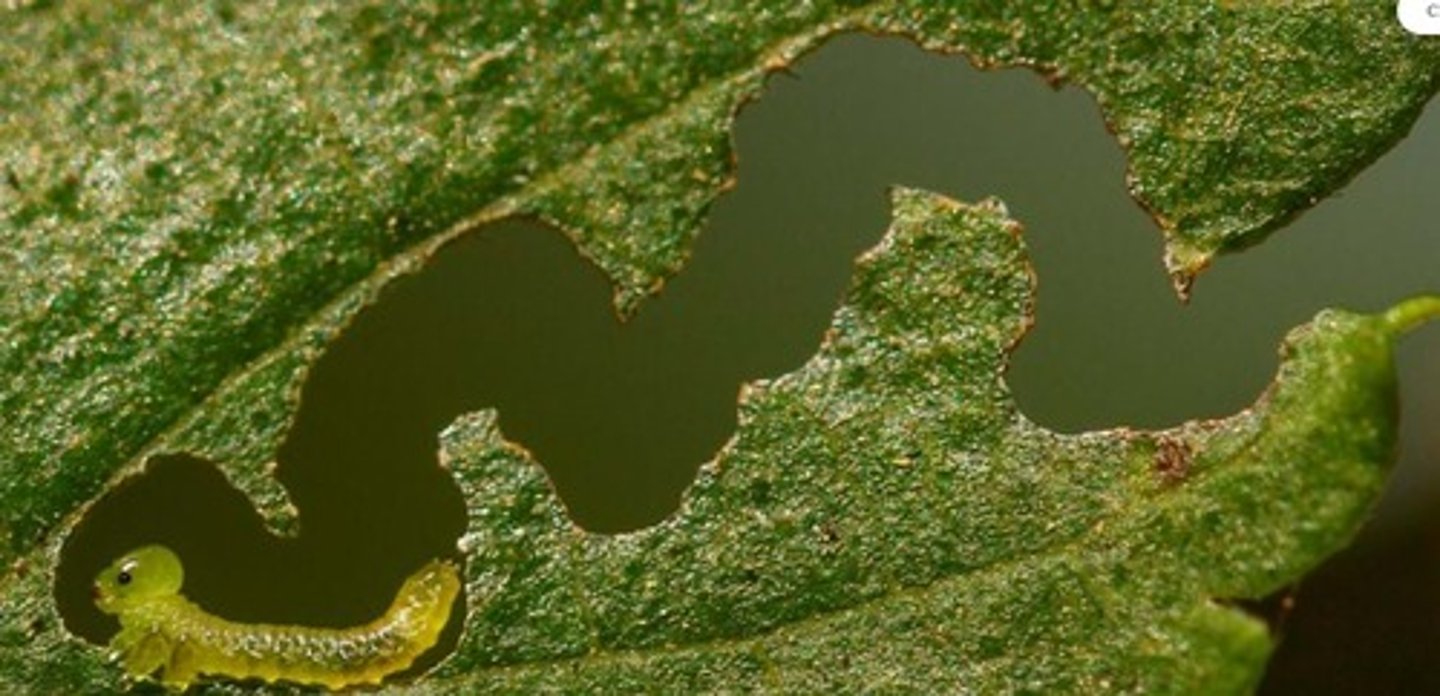
eruciform
caterpillar like insect larvae

Phytophagous
Insect that feeds on plants
Kleptoparasitoids
Insects that steal food and pray from another organism
Hyperparasitoids
Species that are parasitoids of other parasitoids
Superhyperparasitoids
Species that are parasitoids of a parasitoid of another parasitoid
Polydnaviruses
Viruses used by parasitoid eggs/larva to shut down host immune system, make it stay in a stage that's good for the parasitoid, make it eat more and prevent it from converting food into fat, but into sugar.
Polyembryony
The condition where a single egg splits into many embryos, producing that many clones of the original egg.
Spiracles
- Breathing tubes of insects located on abdomen
- Open into subelytral cavity
- Respiratory System
- Trachea, Tracheoles, and Taenidia
Campodeiform
- Beetle larvae having an elongated and flattened shape
— Active, predatory.
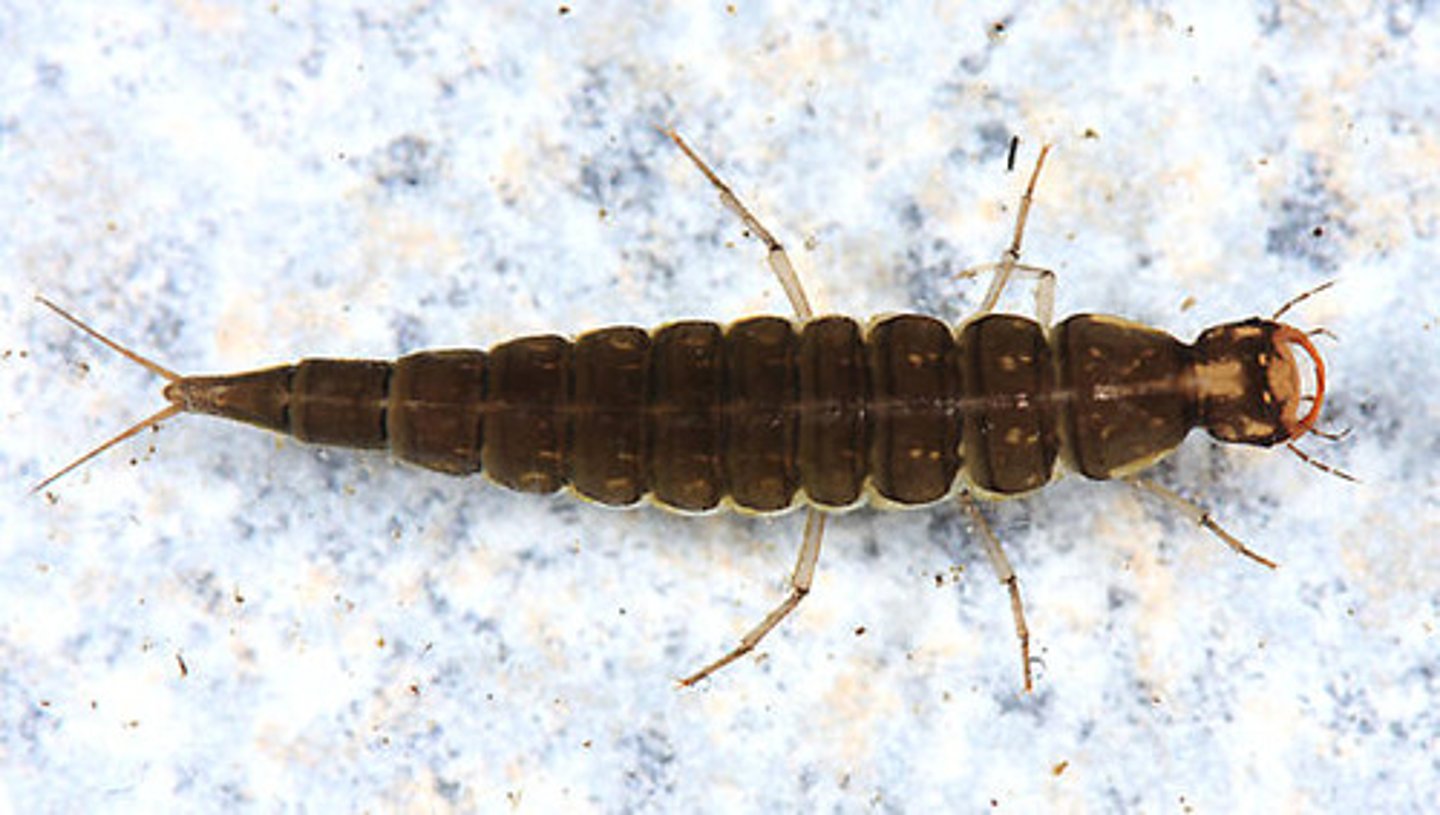
Elateriform
- Wireworms
- Elongate, tough cuticle
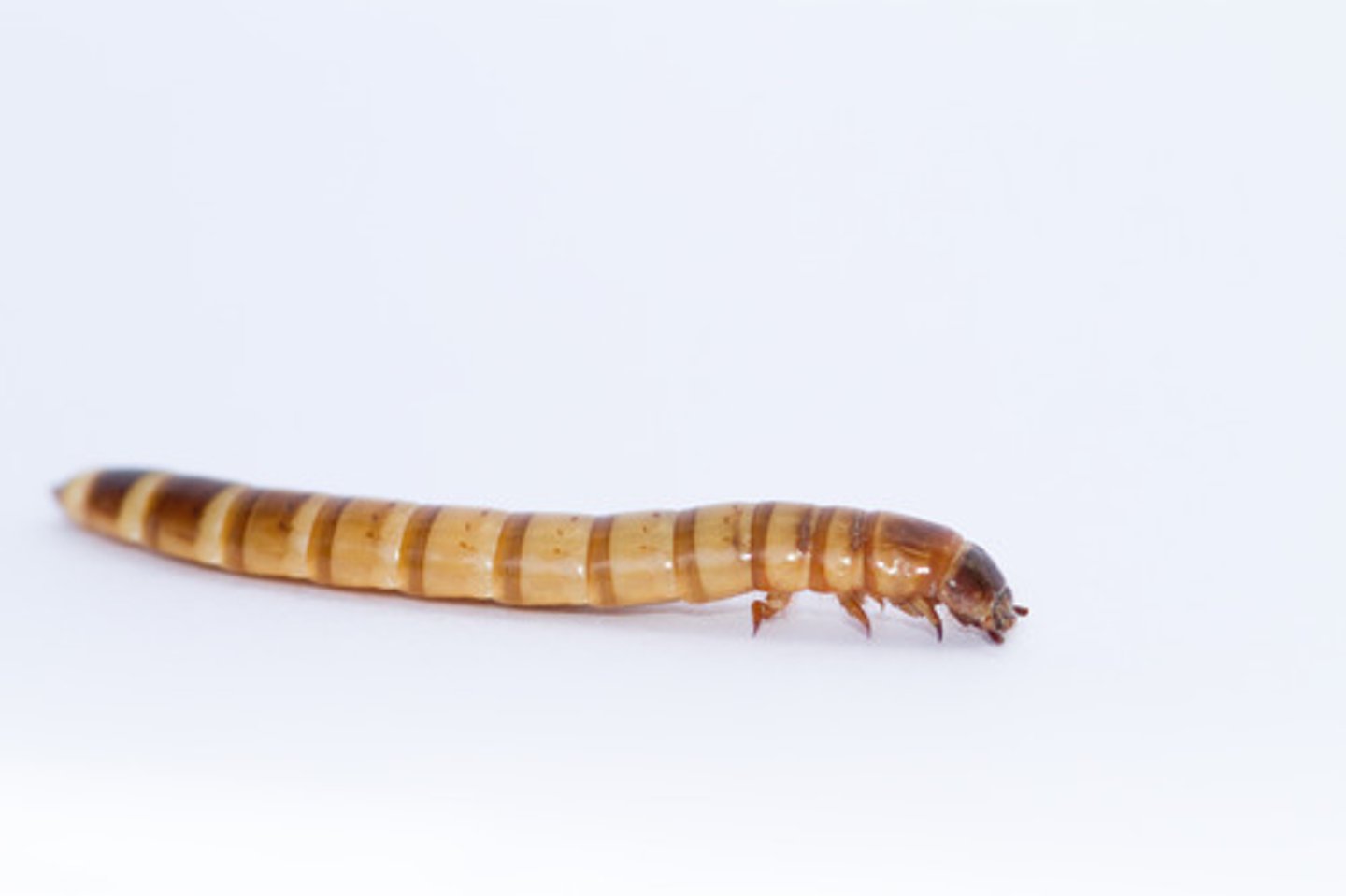
Scarabaeiform
- Grub-like
- Obese, c-shaped
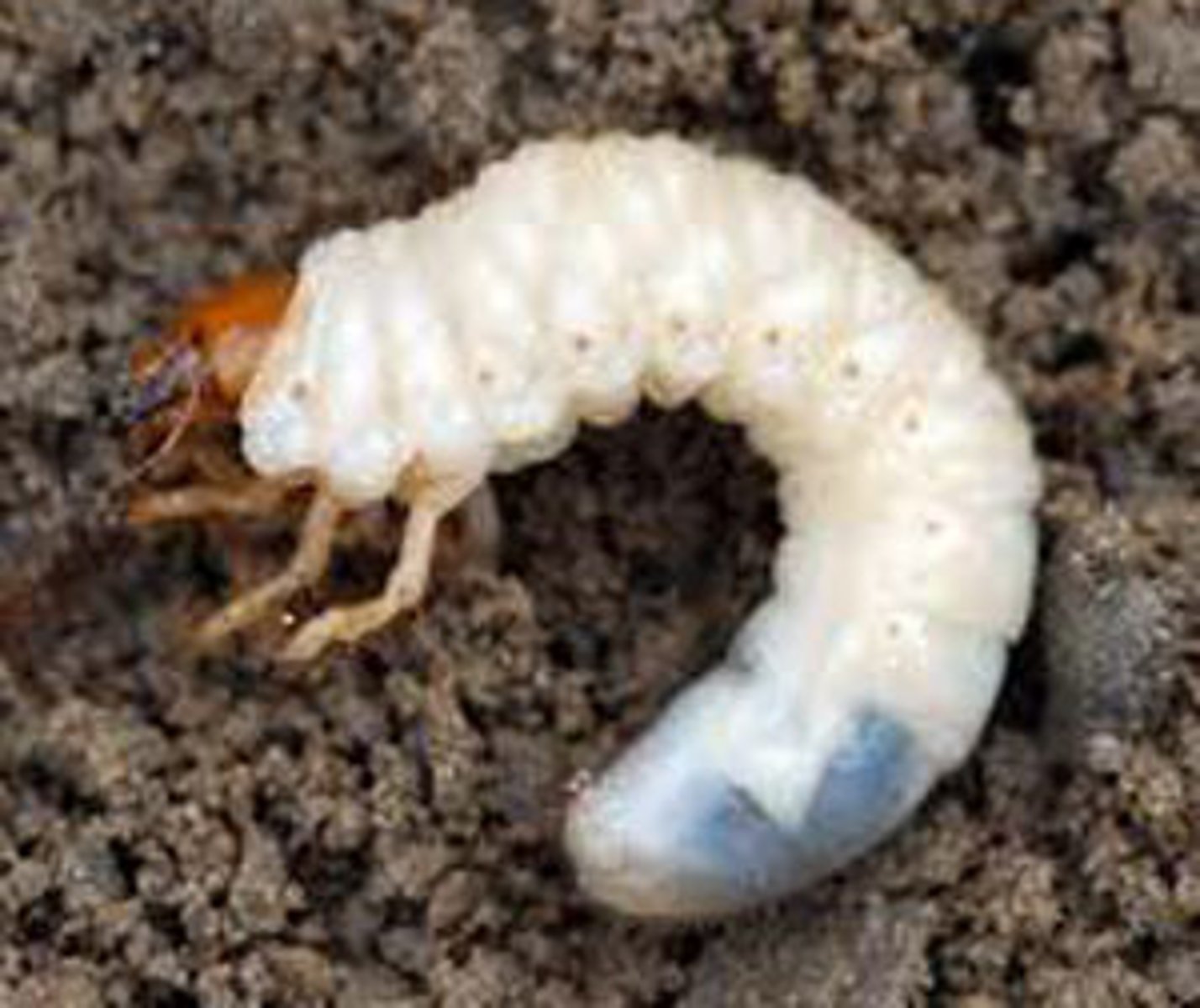
Hypermetamorphosis
When an insect passes through more than the three normal stages of complete metamorphosis.

Planidium larvae
- Specialized form of insect larva seen in the first-instar of insects that have parasitoidal ways of life
- Hypermetamorphosis
- Strepsiptera
Neotenic females
- Retention of juvenile traits
- Strepsiptera
Matricide
Act of killing one's mother
Trochanter
The second segment in the leg
Jugum
A lobe on the forewing of some moths which interlocks with the hindwing in flight
Amplexiform coupling
- The power stroke of the forewing pushes down the hindwing in unison, no connection
- Lepidoptera
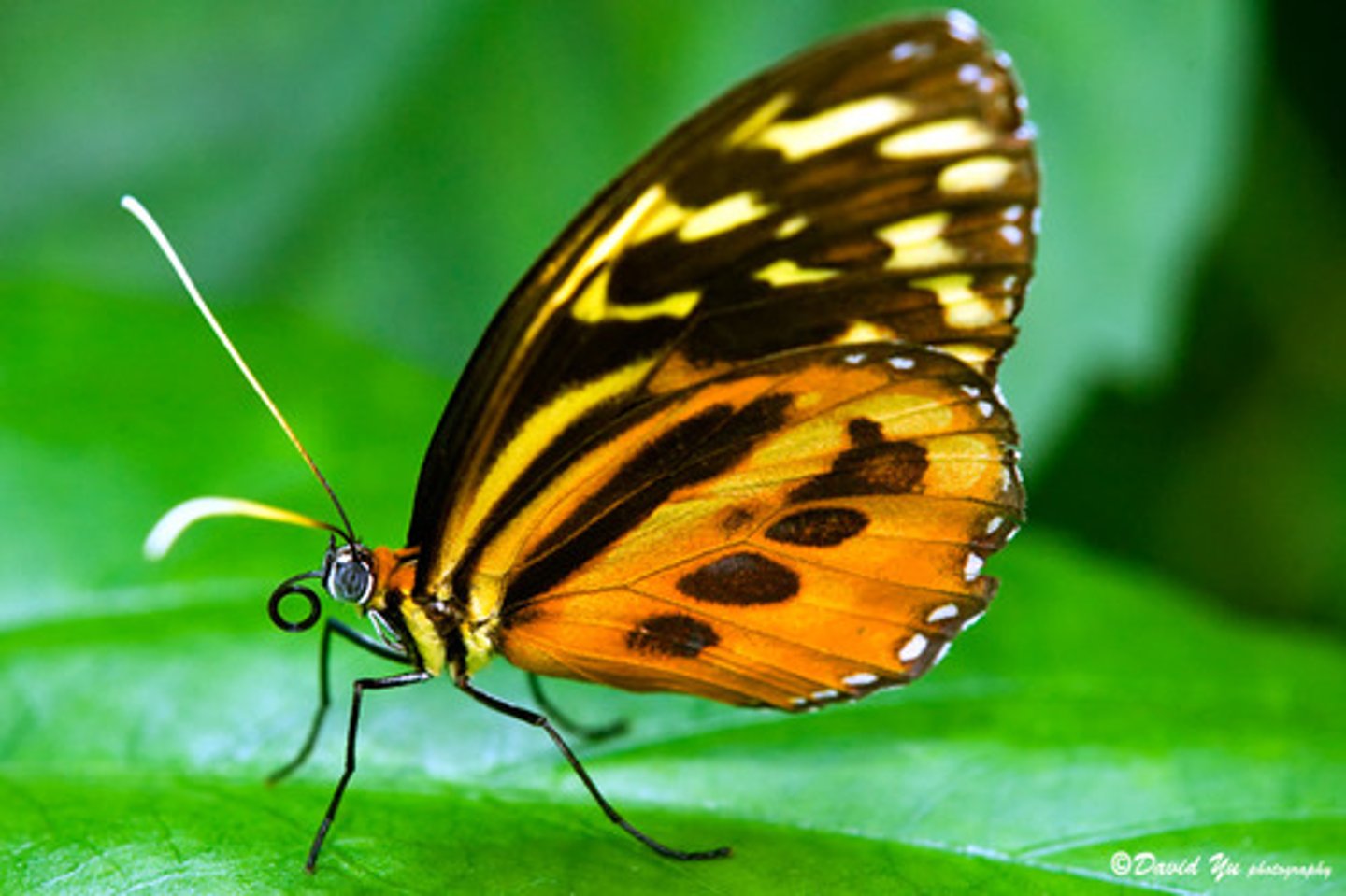
Frenulum
Row of bristles along the leading (front) edge of the hind wing of butterflies and moths and also in some Hymenoptera
Retinaculum
A bristle on the butterfly forewing that clasps to the frenulum of the hindwing.
Phytophagous
Feeding on plants
Cantharidin
- Blister beetle toxicity
- Meloidae
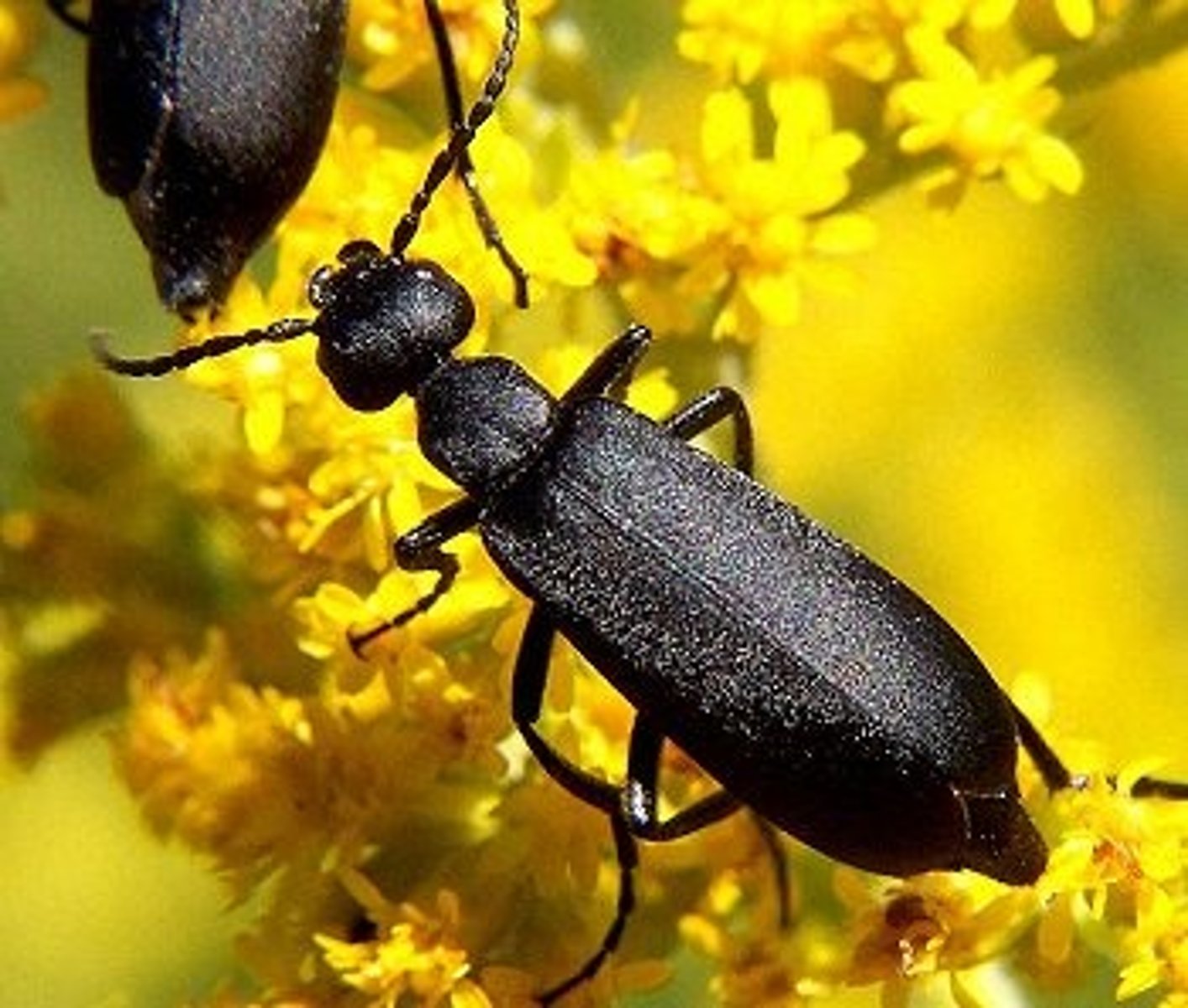
luciferin and luciferase
- Two chemicals that when mixed produce light
- Lampyridae

Scutellum
Shield-shaped plate on the back of an insect's thorax
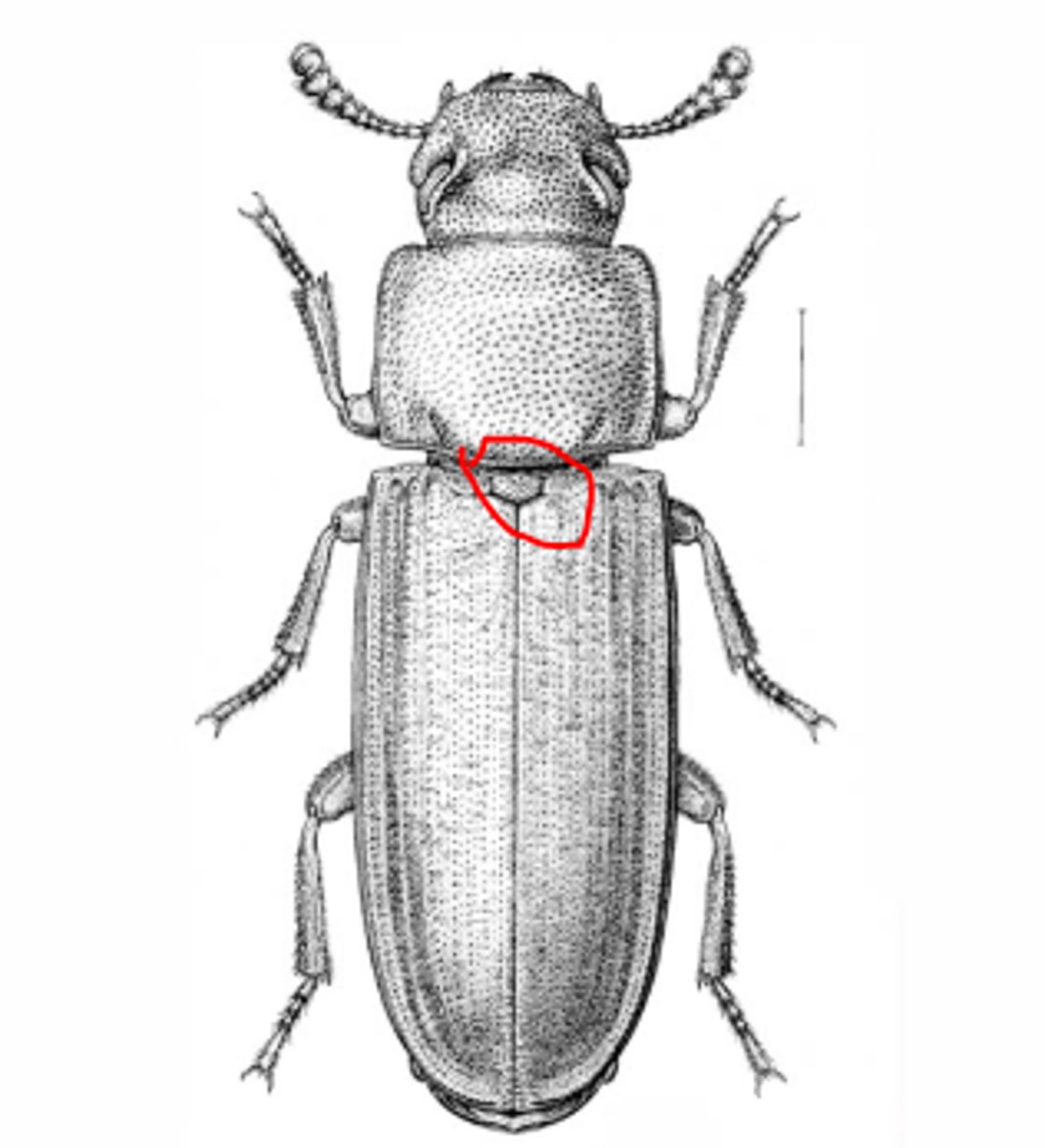
Cryptopleuron
- Propleuron concealed
- Suborder Polyphaga
Malpighian tubules
- Main excretory organs in most insect
- Neuroptera pupate in silk from Malpighian tubules
Cardioglycosides
Monarch catipilers get from eating milkweed
Amplexiform coupling
- Wing coupling mechanisms in the Jugum which render these taxa as "functionally dipterous" (effectively two-winged) for efficient insect flight.
- Lepidoptera
Jugum
- Area at the base of the fore wing of some insects that overlaps the hind wing
- Holds the fore and hind wings together during flight.
- Lepidoptera
Frenulum
- A bristle or group of bristles on the leading edge of the hindwing
- Lepidoptera
Retinaculum
- A hook or tuft on the underside of the forewing
- Lepidoptera
Galeae
A complex organ in Lepidoptera, that forms the proboscis, or feeding device, of the insect
Plumose
feathery

Filiform
thread-like

Pectinate
Branches like the teeth of a comb
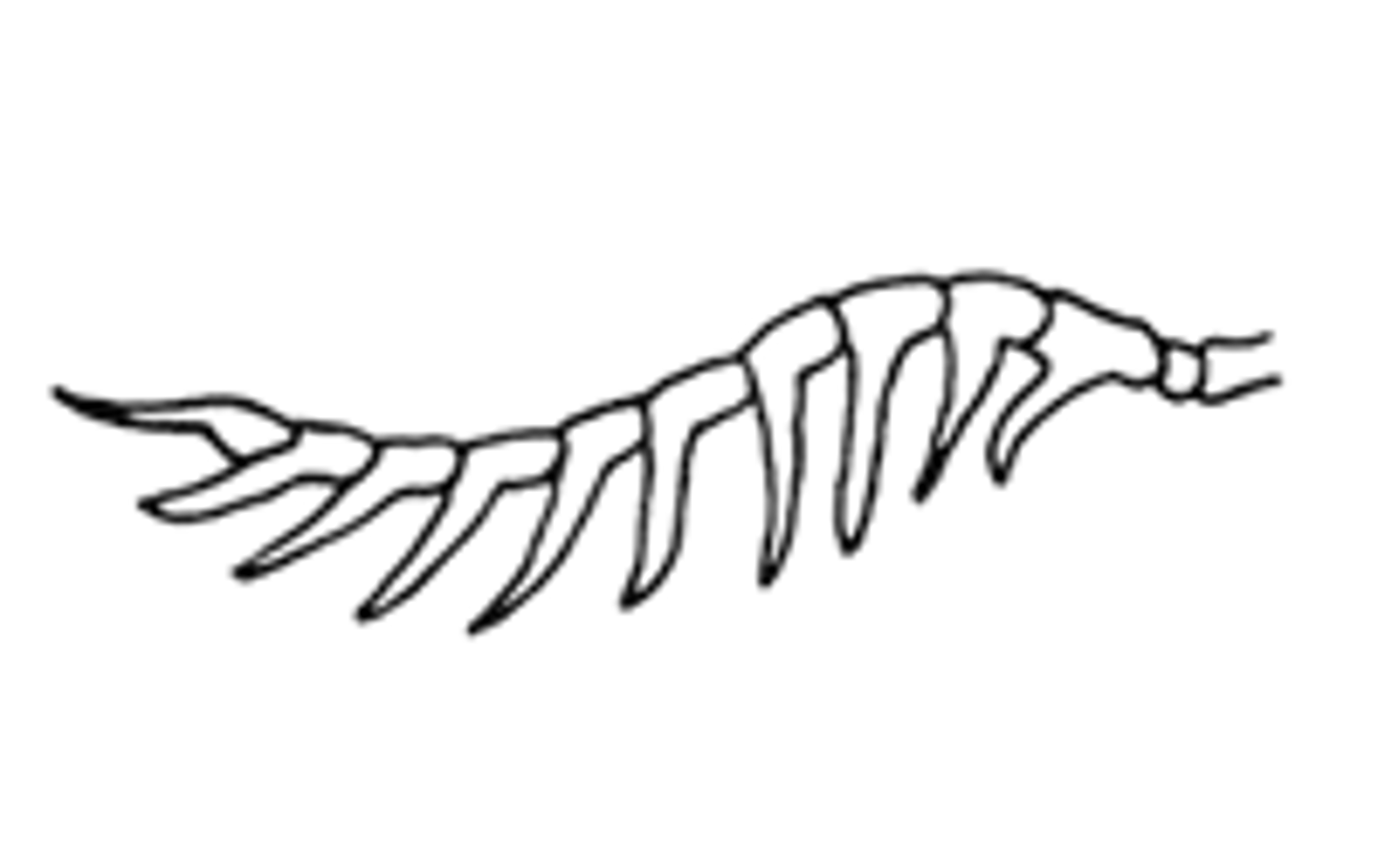
Bipectinate Antennae
Branches on two sides
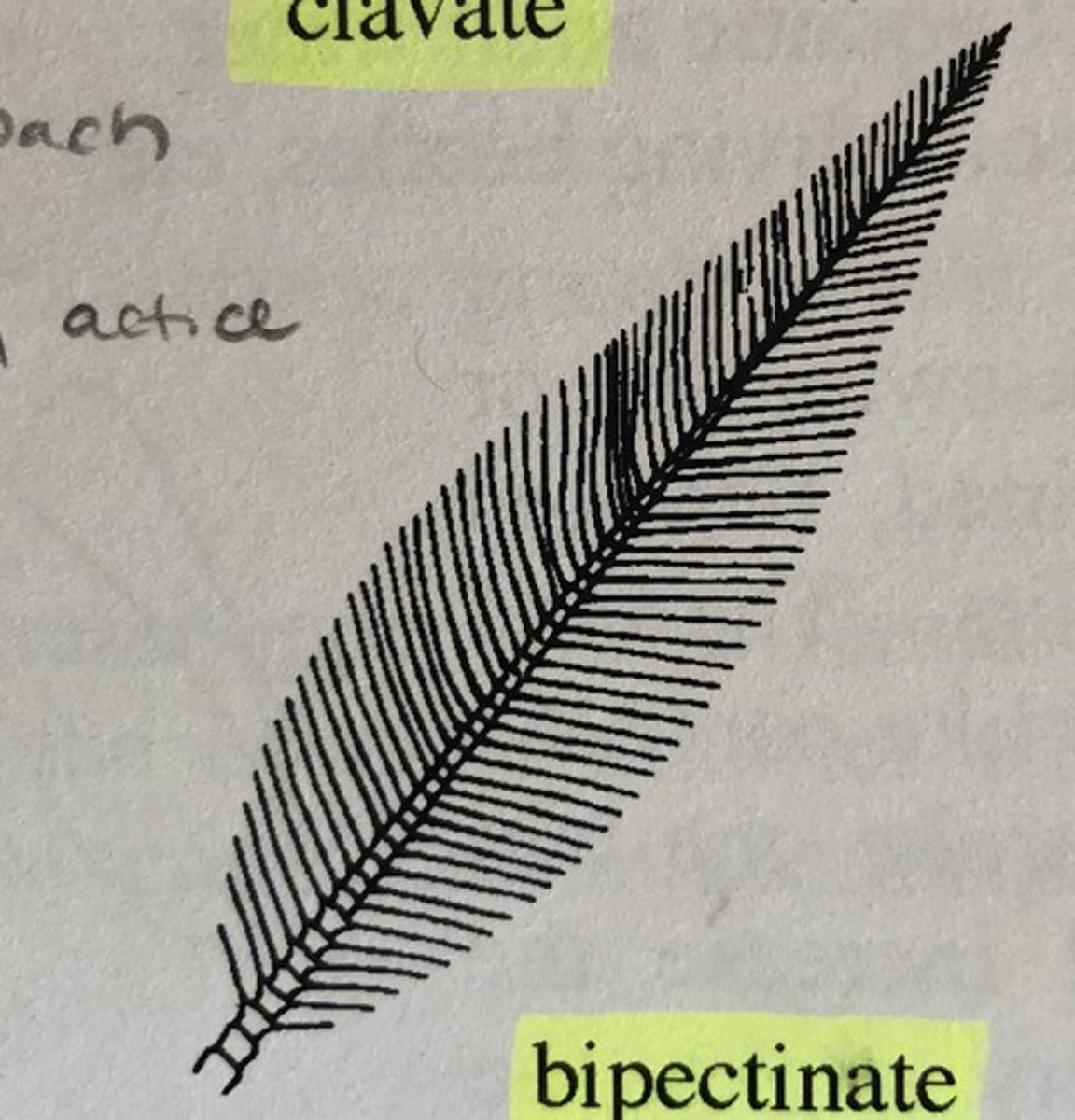
Stemmata
- Simple eyes used for vision by larvae
- Lepidoptera
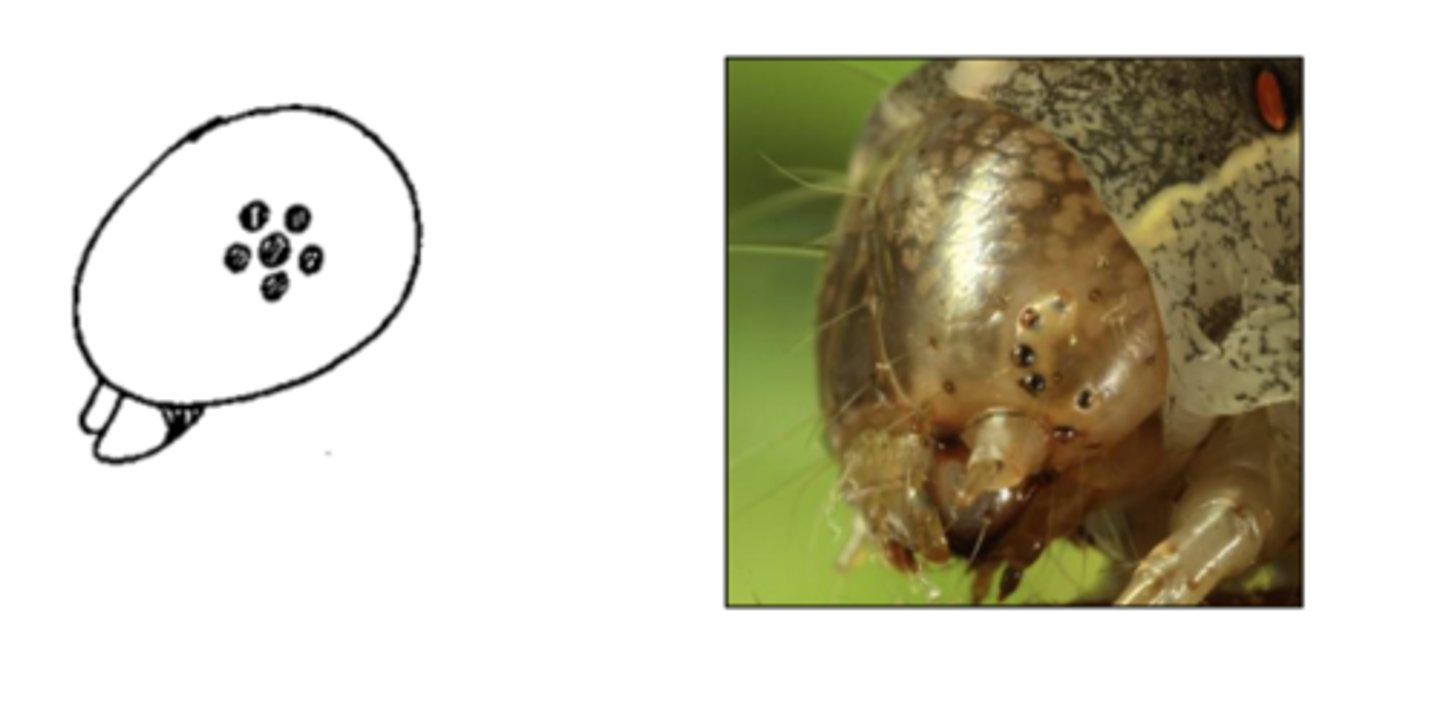
Labial silk glands
Silk-producing organs found in the larval stage of some insect orders, such as Lepidoptera, Trichoptera, and Hymenoptera
Cremaster
Attaches the pupa to silk fibres spun by the larva
Labial palps
Pair of olfactory organs on the ventral side of a moth's head
Osmeterium
Defensive organ found in all Papilionidae larvae, in all stages. The organ is situated in the prothoracic segment and can be everted

Bifid tarsal claws
- 2 small claws on butterfly feet
- Pieridae

Gregarious
larvae that stay together in groups and feed or move together
Gynandropmorph
- An organism that contains male & female characteristics
- many Leps dimorphic
Ctenidia
Comb-like rows of spines on the head of an adult flea
Chaetosemata
- Cluster of sensory bristles on each side of the head near the eye
- Tortricidae
Macrotrichia
hairs & scales of Lepidoptera wings
juvenile hormone
- Used to control flea populations
- Prevents them from maturing

Calypter
A small lobe on the hind margin near the base of the wing of some flies.
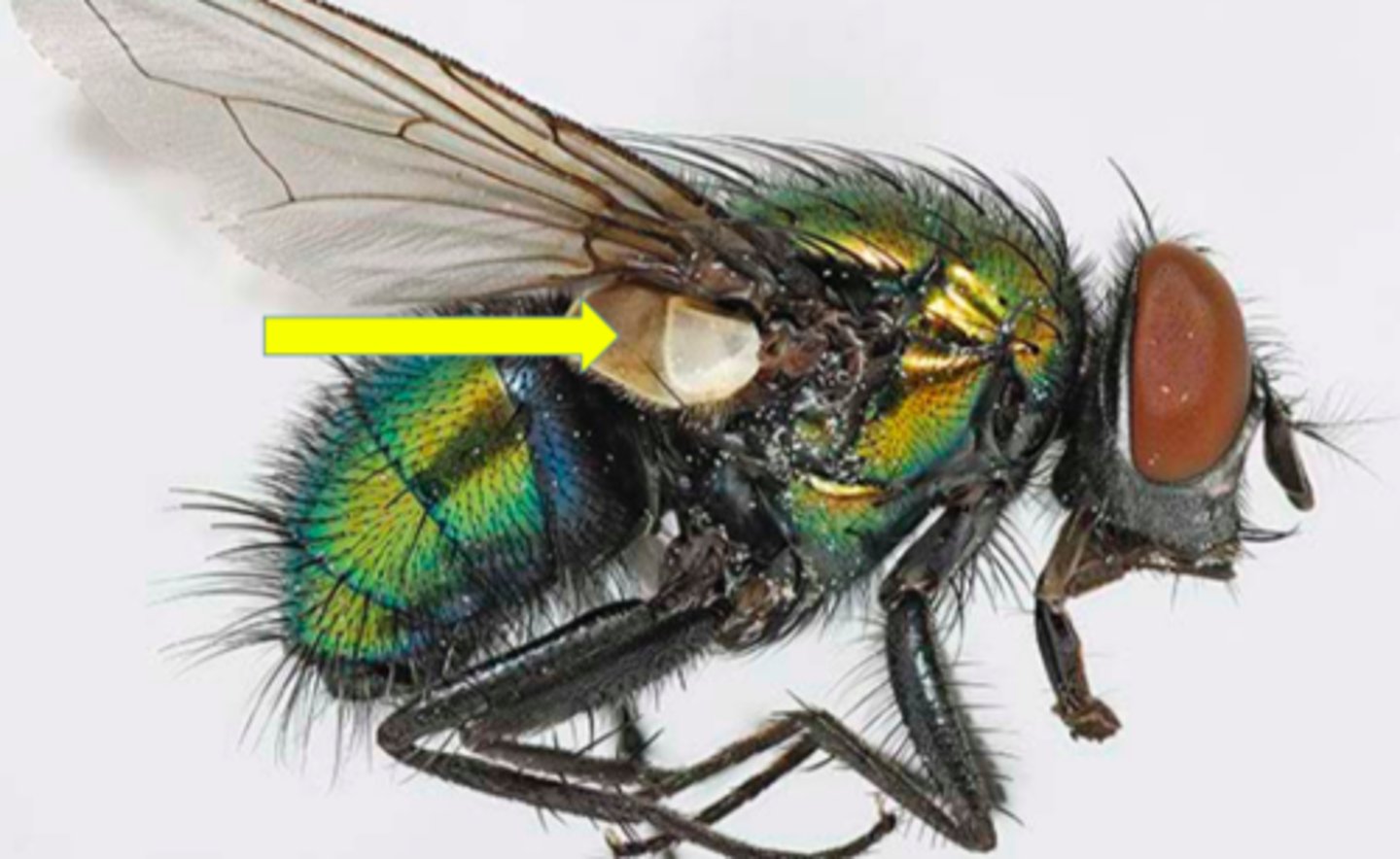
Aschiza
without ptilinum
ptilinum
An eversible sac of the frons in dipterous pupae used for rupturing the puparium

Maggot debridement
- Use of medical grade larvae of the greenbottle fly to dissolve dead and infected tissue from wounds.
- Calliphoridae
Ovoviparous
- Species in which the embryos develop within the mother's body but depend entirely on the yolk sac of their eggs
- Sarcophagidae
Why Insects are. so successful
1. Exoskeleton
2. Early colonization of land
3. Small size
4. High birth rate/short generation time➢ Adaptability
5. Efficient flight
6. Complete metamorphosis